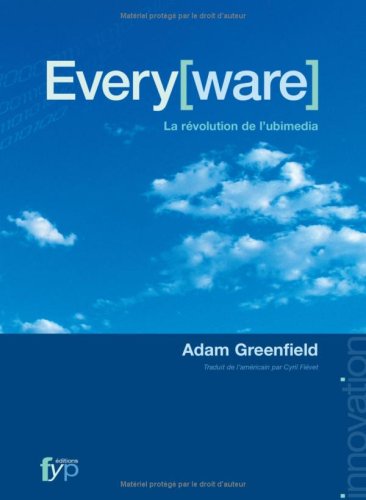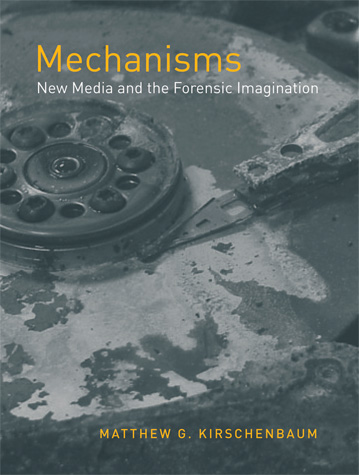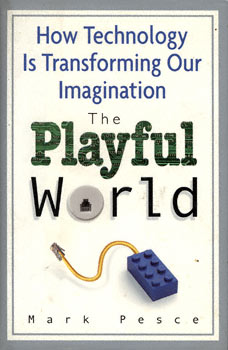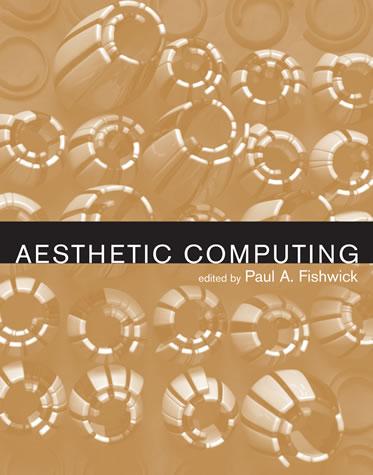Plusieurs ouvrages en lien avec les champs de recherche du Laboratoire NT2 sont maintenant disponibles pour consultation:
Fishwick, (éditeur) (2006). Aesthetic Computing. : MIT Press, Cambridge, 475 pages
In Aesthetic Computing, key scholars and practitioners from art, design, computer science, and mathematics lay the foundations for a discipline that applies the theory and practice of art to computing. Aesthetic computing explores the way art and aesthetics can play a role in different areas of computer science. One of its goals is to modify computer science by the application of the wide range of definitions and categories normally associated with making art. For example, structures in computing might be represented using the style of Gaudi or the Bauhaus school. This goes beyond the usual definition of aesthetics in computing, which most often refers to the formal, abstract qualities of such structures—a beautiful proof, or an elegant diagram. The contributors to this book discuss the broader spectrum of aesthetics—from abstract qualities of symmetry and form to ideas of creative expression and pleasure—in the context of computer science. The assumption behind aesthetic computing is that the field of computing will be enriched if it embraces all of aesthetics. Human-computer interaction will benefit—"usability," for example, could refer to improving a user's emotional state—and new models of learning will emerge.
Aesthetic Computing approaches its subject from a variety of perspectives. After defining the field and placing it in its historical context, the book looks at art and design, mathematics and computing, and interface and interaction. Contributions range from essays on the art of visualization and "the poesy of programming" to discussions of the aesthetics of mathematics throughout history and transparency and reflectivity in interface design.
Greenfield, (2007). Every[ware] La révolution de l’ubimédia: FYP, pp. 256.

L'ubimédia peut se définir comme ce qui reste de l'informatique quand les ordinateurs ont disparu - ou plutôt, ont fusionné avec tout ce qui nous entoure. Un monde de puces communicantes, de capteurs en tous genres, de surfaces interactives et d'interfaces innovantes, qui redéfinissent notre conception des objets, des lieux et des relations sociales. Un univers informationnel dense, omniprésent et toujours connecté, dont les téléphones mobiles et les réseaux sans fil actuels ne sont que les prémisses. Adam Greenfield, en des termes simples et accessibles aux néophytes, nous précipite dans cette vision à la fois futuriste et réaliste, nous incitant à comprendre les enjeux et les conséquences d'une évolution majeure qui nous concerne tous. Car, pour le meilleur ou pour le pire, l'ubimédia est la nouvelle réalité de l'informatique du XXIe siècle.
Knowles, ; Cole, (2008). Handbook of the arts in qualitative research : methodologies, examples, and issues. Los Angeles: Sage Publications.

The Handbook of the Arts in Qualitative Inquiry: Perspectives, Methodologies, Examples, and Issues represents an unfolding and expanding orientation to qualitative social science research that draws inspiration, concepts, processes, and representational forms from the arts. In this defining work, J. Gary Knowles and Ardra L. Cole bring together the top scholars in qualitative methods to provide a comprehensive overview of the past, present, and future of arts-based research. This Handbook provides an accessible and stimulating collection of theoretical arguments and illustrative examples that delineate the role of the arts in qualitative social science research.
Kirschenbaum, (2007). Mechanisms: New Media and the Forensic Imagination. Cambridge: MIT Press, 296 p.

In Mechanisms, Matthew Kirschenbaum examines new media and electronic writing against the textual and technological primitives that govern writing, inscription, and textual transmission in all media: erasure, variability, repeatability, and survivability. Mechanisms is the first book in its field to devote significant attention to storage—the hard drive in particular—arguing that understanding the affordances of storage devices is essential to understanding new media. Drawing a distinction between "forensic materiality" and "formal materiality," Kirschenbaum uses applied computer forensics techniques in his study of new media works. Just as the humanities discipline of textual studies examines books as physical objects and traces different variants of texts, computer forensics encourage us to perceive new media in terms of specific versions, platforms, systems, and devices. Kirschenbaum demonstrates these techniques in media-specific readings of three landmark works of new media and electronic literature, all from the formative era of personal computing: the interactive fiction game Mystery House, Michael Joyce's Afternoon: A Story, and William Gibson's electronic poem "Agrippa."
Drawing on newly available archival resources for these works, Kirschenbaum uses a hex editor and disk image of Mystery House to conduct a "forensic walkthrough" to explore critical reading strategies linked to technical praxis; examines the multiple versions and revisions of Afternoon in order to address the diachronic dimension of electronic textuality; and documents the volatile publication and transmission history of "Agrippa" as an illustration of the social aspect of transmission and preservation.
Pesce, (2009). The Playful World: How Technology Is Transforming Our Imagination. New York: Ballantine Books, 304 p

As you read these words, the architects of the new virtual reality are inventing a world you never imagined: call it the playful world. It's a world of interactive Web-based toys that instantly collapse the gulf between wish and existence, space and time, animate and inanimate. It's a world where the entire fabric of the material world becomes manipulable, programmable, mutable. Situated at the crossroads of high technology and popular culture, the playful world is taking shape at the speed of electronic creativity.
Are you ready for it? Your kids are.
In this spellbinding new book, Mark Pesce, one of the pioneers in the ongoing technological revolution, explores how a new kind of knowing and a new way of creating are transforming the culture of our time. It started, bizarrely enough, with Furbys, the first toys that had the "will" to grow and interact intelligently with their environment. As Pesce argues, Furbys, for all their cloying cuteness, were a vital sign of a new human endeavor--the ability to copy part of our own intelligence into the physical world.

